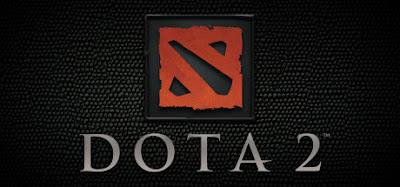Hey guys! it's Sam again, and today I'm going to provide you with an insight into something beyond the realm of 'normal' sports, instead focusing on a fairly niche area in Australia (and to a lesser extent, the world) that I hold a great deal of interest in: E-Sports.
E-Sports in Australia
The term 'E-Sports' (or Electronic Sports), refers to the playing of certain video games in a competitive, organised and sport-like fashion. E-Sports, as they are known today, began in the mid to late 1990's in Northern America with the creation of the Cyberalthlete Professional League (http://thecpl.com), and growing international interest in these sports led to the creation of global competitions, such as the World Cyber games in Korea (http://au.wcg.com), as well as Major League Gaming (www.majorleaguegaming.com). This was also supported by the release of games in which such a competitive style of play was the primary intention, such as Counter-Strike in 1999 and Starcraft in 1998. Since this time, the world of competitive E-Sports has greatly expanded, finding a truly international market, with ever increasing advertising and sponsorship deals providing prizes of up to $1,000,000 for winning teams, such as that seen within the tournament promoting the release of the game DOTA 2 (http://www.dota2.com/tournaments/international).

The winners of Valve's DOTA 2 promotion tournament
Unfortunately, as is often the case with items of relatively niche interest, Australia has been seen as somewhat slow to become involved in the the competitive gaming scene in any serious sense. It was not until 2006, with the creation of the Australian Cyber League, that a professional outlet for E-Sports within the country existed. However, since then, Australian interest in the sport has risen exponentially, with pro teams such as Sydney Underground and Mind Freak gaining serious international attention. Whilst, to this day, competitive gaming remains far more of a casual hobby than a serious sport, the prevalence of tournaments and competitions, both online and in organised Local Area Networks (LANs) has increased far beyond anything previously imagined, and I have little doubt that as this growth continues, so too will interest and recognition from sponsors and media networks, thus promising a bright future for the world of Australian competitive E-Sports.
I will now provide a brief overview of some of the primary games played within competitive tournaments, both in Australia and Internationally.
Counter Strike
Image source: (http://store.steampowered.com/app/240/)
Counter Strike, released as a mod for Half-Life in 1999, is generally considered one of the defining games within the professional circuit. It follows a simple, two-team structure in which Terrorists and Counter-Terrorists use a variety of realistic weapons to plant bombs, rescue hostages and eliminate the opposing force. Since 1999, three more iterations of the game have been released (Condition Zero, Source and Global Offensive) thus ensuring that Counter Strike remains at the forefront of competitive gaming, and holds a spot in all the largest E-Sport Leagues.
Starcraft
Image Source: (http://media.bestofmicro.com/4/0/245088/original/SC2%20title.jpg)
Starcraft was released in 1998 by Blizzard Entertainment, and follows the basic structure of most other games within the Real-Time Strategy (RTS) genre, with multiple players creating and fighting with large armies of units. Starcraft's enormous presence within the competitive gaming industry is the result of its unprecedented degree of popularity within South Korea, generally attributed to its release alongside the national internet network. Since then, Starcraft has grown to become South Korea's unofficial national sport, with two television channels dedicated to showing coverage of the game, and professional players receiving celebrity status within the public eye.
Defense of the Ancients
Image Source: (http://storefront.steampowered.com/v/gfx/apps/570/header.jpg)
Defense of the Ancients (generally known as DOTA) was originally released in 2003 as a mod for the game warcraft 3. It follows a unique structure in which players work in teams of up to 5, controlling an individual hero and attempting to push through increasingly powerful defenses and into the opponent's base, whilst simultaneously defending their own. Due to the constraints of the engine on which it was originally built, DOTA has been somewhat superseded of late by games borrowing its basic structure, but providing simplified and specific means of finding others to play with, such as League of Legends and Heroes of Newerth. Later this year, Valve software will be releasing the official sequel to DOTA, as shown above, thus hoping to bring the community back to its roots, and replace both the original game and its competitors within the professional E-Sports scene.
Wow, that post was longer than I originally intended, thanks for sticking around till the end :)
See you next time
-Sam





























